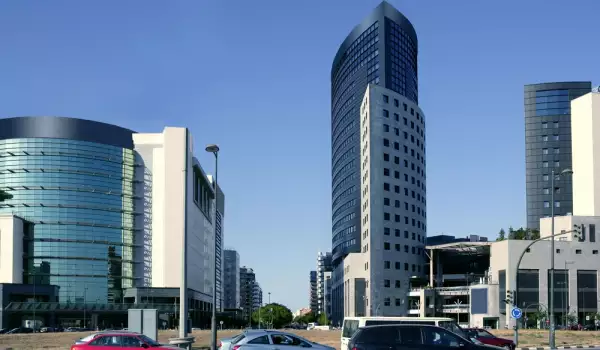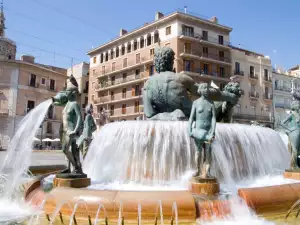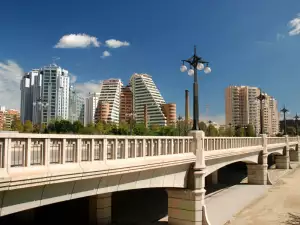Valencia

Located on the central eastern Spanish coast, Valencia is one of the most pleasant and beautiful places to visit in Spain. Valencia is an amazing combination of beautiful, wide beaches, palm trees, modern and ancient Gothic architecture, hospitable people, many tourists from around the world and excellent local cuisine. Not surprisingly, Valencia is the birthplace of traditional paella.
Annually, in early March the world famous Las Fallas festival is held here, which lasts 5 days and is accompanied by music, dancing, parades, paella and fireworks as well as fire crackers, whose use is permitted only during this holiday.
The city is situated on the Mediterranean coast at the confluence of the River Turia. Valencia is the capital of the homonymous province and autonomous region. It is the third largest city in Spain after Madrid and Barcelona. There are about 810, 000 inhabitants. There are two official languages - Valencian and Castilian and do not be surprised that in some places the street signs are bilingual.
Valencia was founded in 137 BC by the Romans under the name Valentia. After the collapse of the Roman Empire Valencia was under different management, but mostly under the Moors, who turned Valencia into the capital of the independent Islamic north kingdom in the 11th century. Proof of those times has remained alive today in the face of the Islamic Calle Almirantes Street in the old Valencia.

In 15-16 century Valencia was an important port on the Mediterranean. There around 1478 was printed a translation of the Bible into the Valencian language. The "Golden period" of Valencia turned the town into one of the most developed and important cultural and economic centres of Europe. Many beautiful buildings were built, with the main emphasis on urban architecture in Valencia until today.
In practice, almost no building in Valencia can be described as bleak and ugly. All over town you can see architectural masterpieces of Gothic art, such as the building of the Silk Exchange (La lonja) and extravagant baroque churches. Llotja de la Seda is a monument that in 1996 became a World Heritage site by UNESCO. This building is unique in Gothic style in the civil engineering of Valencia and was built between 1482 and 1548.

Plaza de la Reina is a street that separates the railway station and the Coliseum in Valencia. In fact the River Turia no longer passes through the city and along its former course was built a beautiful park, 7 km long. You can see interesting plants, and visit various amusement parks, music and cinema centres, etc. Over the river were built many beautiful bridges.
The modern face of Valencia is dominated by a spectacular mega-complex with futuristic architecture, known as the city of art and science. Built on Santiago Calatrava's design - one of the most famous Spanish architects, the complex in Valencia consists of 5 parts: the home of art or opera (Palau de les Arts), the largest aquarium in Europe (L'Oceanogràfic), an interactive science centre, planetarium (L'Hemisfèric), IMAX cinema and a botanical garden (L'Umbracle ).
Valencia’s Museo de Bellas Artes ranks among the best museums in the country, houses a beautiful collection, including works by El Greco, Goya, Velazquez and several of impressionists from Valencia. This building in Valencia is one of the most modern in the world.
At the square of the Virgin can be visited the eponymous Basilica Virgen de los Desamparados. Visitors have the opportunity to climb to its top point and enjoy the beautiful views of Valencia. On this square is the fountain Turia, and adjacent is the Placa de la Reina with the cathedral, which was once a mosque. Here the atmosphere is unique mostly because of the orange trees and numerous bars and restaurants.
Among the interesting places to visit in Valencia is the old fishing quart El Cabanyal, long beaches, Las Arenas and La Malvarrosa. The beaches in Valencia are large, surrounded by palm trees and make for pleasant walks. Along them line up many restaurants and bars that are the heart of the nightlife in Valencia.











